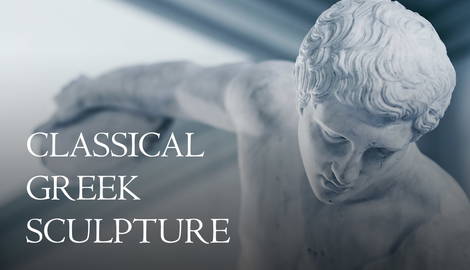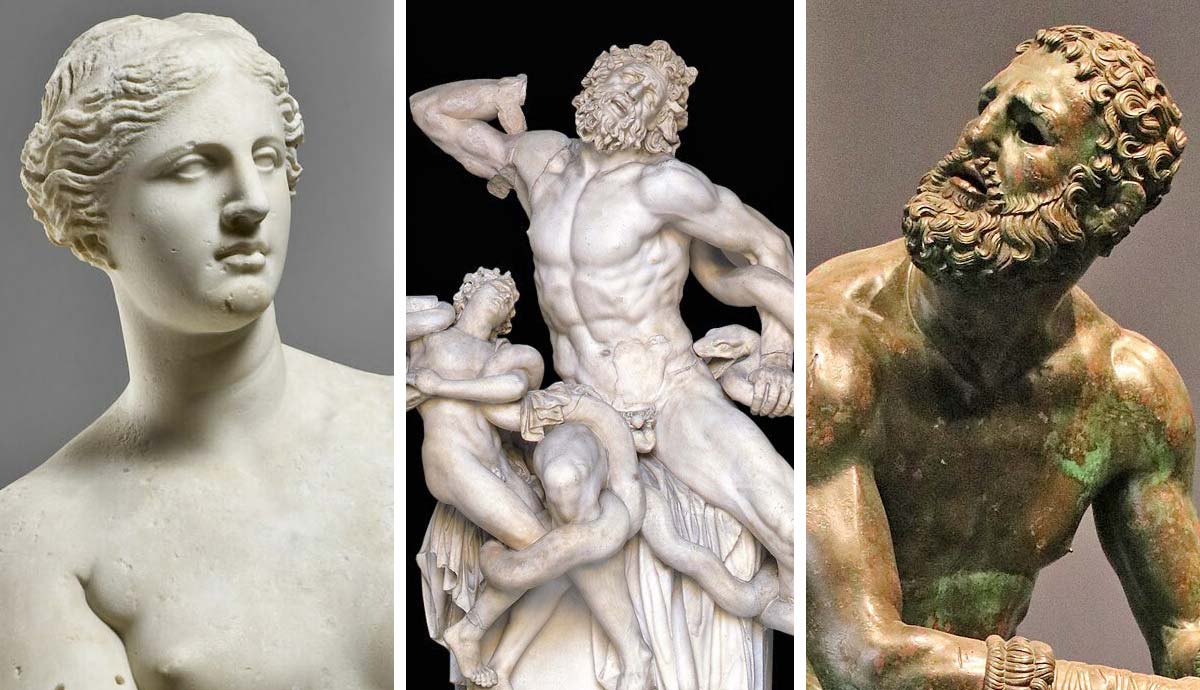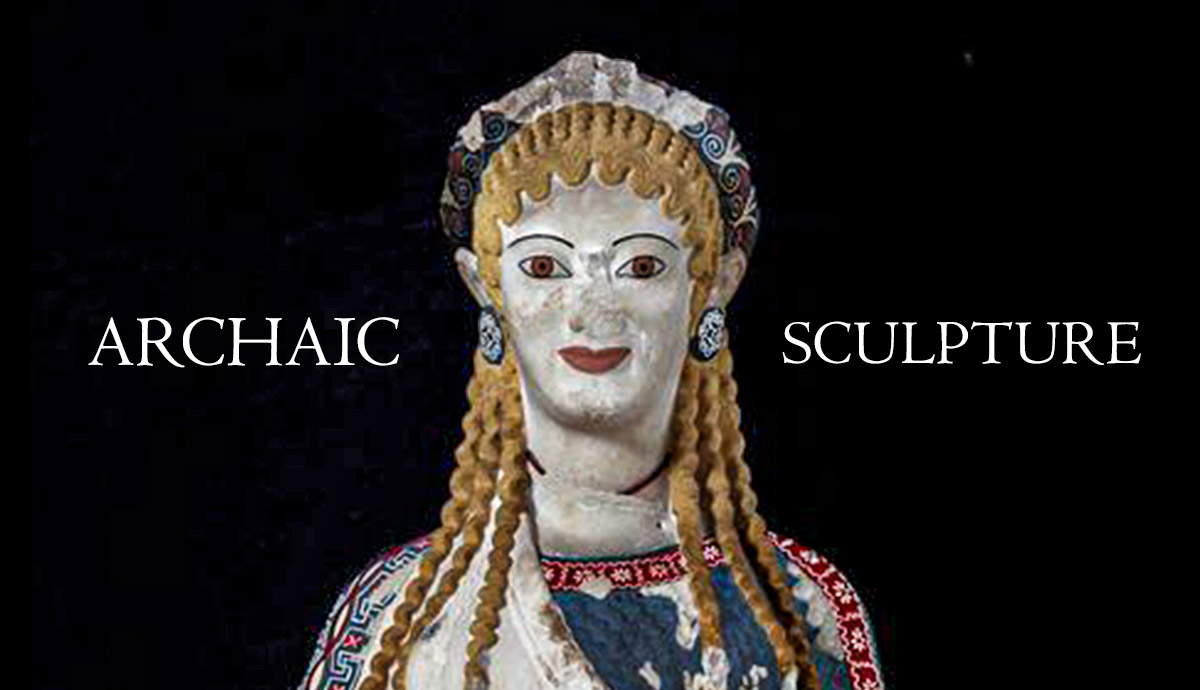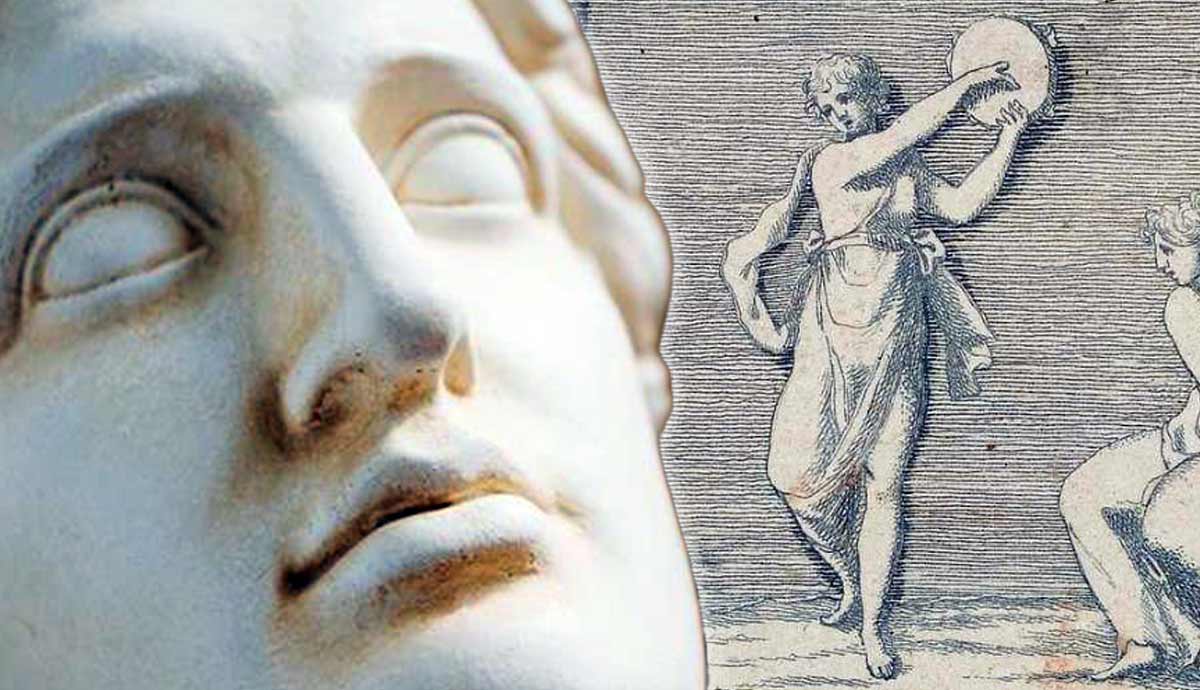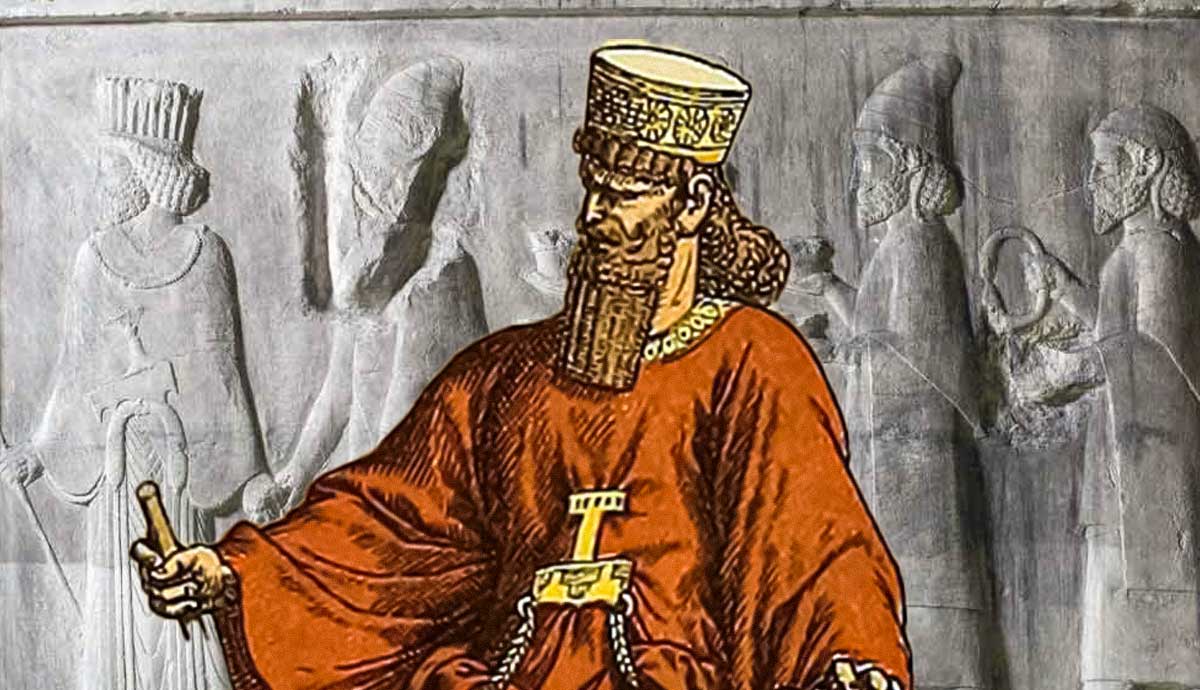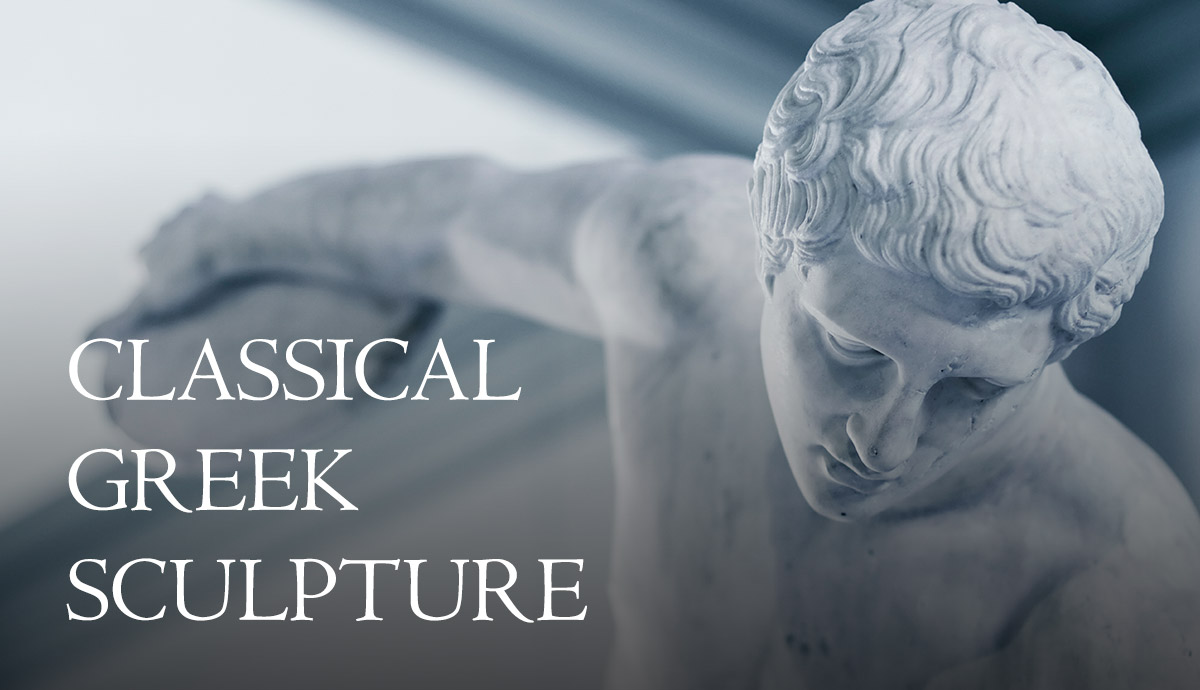
After the Persians were thrown back from their attempt to conquer Greece, the Greek world was buoyed by a sense of optimism that permeated all aspects of society. It was during this time, called the Classical Era by historians, that ancient Greek culture reached its apogee, becoming an inspiration for centuries to come. The art of statue-making also reached its zenith, with the carved figures representing the idealistic perfection of a civilization on the rise.
Sculpture in the Classical Age of Ancient Greece

The veil of cultural stagnation that gripped ancient Greece after the Bronze Age Collapse began to lift during the Archaic Age, which began around 800 BCE. At the dawn of the 5th century BCE, the Greek world would be forced to fend off foreign invasions from the east. The mighty Persian Empire descended on Greece, preparing to swallow up this burgeoning culture. After a number of conflicts that still resonate even to this day, the Persians were thrown back, never again to threaten Greek sovereignty, being finally driven out in 479 BCE after the Battle of Plataea.
In the wake of the Persian Wars, Greek culture, led by Athens, flourished. Democracy, a radical form of government, gained traction as a viable political system. Philosophers such as Socrates and Plato revolutionized the way people thought, and artists reached new heights of creative expression that are still the envy of the world. Pottery, sculpture, music, and literature all reached their heights during this era.
The peak of artistic achievement in ancient Greece was, without a doubt, statues. Classical statuary built on the lessons from the Kouroi and Korai of the Archaic era. Even in the latter days of the Archaic era, there were significant innovations to their design. Once stiff limbs became more fluid, and once lifeless statues gained a degree of vitality that had not been seen before.
The Ideal Form

After the stylized forms of the Geometric Era and the Archaic Era’s rigid designs, Greek sculptors of the Classical era revolutionized art by prioritizing more naturalistic postures. Anatomical details were carved into the marble or molded into brass so that the solid material gained a lifelike quality. Muscles were shown tensed or relaxed based on the positioning of the body as if the statue was of a real person frozen in time. The posture was no longer the perfectly upright Kouroi, with symmetrical limbs, but had more natural stances. This era pioneered the use of contrapposto, a more fluid stance in which the majority of the weight is balanced on one leg. This staggers the legs and causes tilting of the hips, shoulders, and pelvis, while also twisting the torso. This technique has become a standard throughout the centuries and is a foundational artistic principle even today.
Though the main focus was on naturalism, not every aspect of life was represented. The subjects were almost always young men in the prime of life, with fit, healthy musculature. The malnourished, overweight, elderly, or injured and crippled were not shown in any way, and women were depicted only on occasion, and usually only goddesses. The focus was on the ideal human form, on extremes of the human experience, so the young, vibrant male was the preferred subject of depiction. The “Archaic Smile” of the statues was replaced by a serene but otherwise blank expression, since showing more emotion was out of vogue. The statues were almost always nude, showcasing the ideal body, though female statues were clothed, emphasizing demure modesty. It is important to note that these principles were a standard that was commonly followed but not hard and fast rules, and there are some exceptions that can be found.
The Canon of Proportion

The names of several sculptors from this era, including Phidius, Myron, and Polykleitos, have survived. It was Polykleitos who codified the “proper” proportion of the statues in a written treatise. Called the “Kanôn,” a type of measuring tool, he based his work on a simple rule: beauty was based on the correct proportion between the different parts of the body. Thus, aesthetics was based on mathematical principles rather than fickle human emotions.
The exact text of the Kanon has been lost to history, but the basic principles still survive. To be specific, Polykleitos stated that the head should be one-seventh of the total height of the body, and the legs and torso should both be the same overall length. The thigh should be two-thirds the length of the whole leg, and the shoulders should be twice the width of the head. Using this ratio, Polykleitos sculpted many perfectly proportional statues, including his most famous work, the Doryphoros, or “spear bearer.”
Other artists also adopted the idea of exact proportions being the source of aesthetic quality, though the details did change, such as dividing the body into eighths instead of sevenths. Millennia later, Leonardo da Vinci used this updated formula to create the “Vitruvian Man,” a diagram of the ideal human form. To this day, the word canon is used to describe the standard of artistic achievement by which all others are judged, be it sculpture, painting, literature, or any other form of art.
How Were Sculptures Made?

The statues were made of two primary materials. The first was stone, initially limestone and later marble. They were carved using chisels and hammers, with smaller and finer tools used for the more intricate details. Although they could occasionally be made from one solid piece of stone, they were more often than not sculpted in separate parts: the body made from one piece, the limbs made separately, and held in place with dowels.
The other major material was bronze. These would be made using the lost wax method. A core of another material would be shaped in the form of the statue, which was then coated in wax, and the details were carved into it. It would then be covered in clay, with vents bored to the outside. Once the clay was set, the wax would be melted and replaced with liquid bronze. After the metal cooled off, the clay would be removed, and the finer details would be scraped, engraved, and polished into their final form.
Unfortunately, bronze was a very valuable material and was melted down and reused repeatedly. As a result, only a handful of bronze statues have survived to the present day, mostly collected from shipwrecks, which prevented their reuse. Marble cannot be reused as easily, so the majority of statues gracing museums are made from this material. Many of these are, in fact, copies of bronze originals. The Doryphoros was first made from bronze, but that has been lost to the ages. It is only known to us today thanks to marble copies made later, particularly from the Roman Empire.
The Appearance of Statues

The statues that survive to this day are plain, often bare stone or metal, and are polished white or tarnished bronze. At the time of their creation, they would have looked very different. Instead of the monochromatic color scheme we are used to seeing, the marble statues were painted bright colors, and would have looked garish by modern sensibilities. Because of the paint, the color or quality of the stone was not of high importance, and seemingly inferior materials were readily used. The skin, hair, and lips were brightly colored in order to highlight anatomical details. Bronze statues were polished to a high sheen.
The eyes were made more vibrant with gems, mother of pearl, glass, or bone inlays, which shimmered in the light, giving the statue a spark of life. The statues were also festooned with objects, such as flowers or wreaths, held objects such as spears and swords, and wore helmets, diadems, crowns, and jewelry.
Bronze statues were free-standing, as they were often hollow and light enough to stand on their own. In contrast, stone statues would topple under their immense weight. To remedy this, they were connected to a stand of some kind, such as a strategically placed marble pillar or tree stump carved as part of the display. The stand was connected to the statue via struts to help support the weight.
Why Were Statues Made?

Greek statues were originally made with religious purposes in mind. During earlier eras, the statues were placed in temples as objects of devotion. The Kouroi and Korai were also used as a way to mark grave sites, once again reinforcing the sacred intention behind their construction. This continued throughout the Classical Age, with many statues serving a spiritual purpose. This included massive ivory and gold statues of Athena in the Parthenon and Zeus in Olympia, the latter being one of the Seven Wonders of the Ancient World. Less grandiose statues of various divine figures were also commonly erected.
In addition to their religious purpose, the statues also took on a secular meaning. In addition to being placed in temples or cemeteries, statues were also placed at gateways, in public spaces, such as in the city’s agora or main gathering place, or at a location where athletic competitions were held. These would be statues of gods, reminding the city’s inhabitants of divine protection and rule, but they could also be of notable individuals, such as prize-winning athletes, their achievements immortalized forever in bronze or stone.
In the later portion of the Classical Era, demand for Greek art spread, especially after Alexander the Great’s meteoric conquests. In addition to conventional statues, high-ranking Macedonian and Greek aristocrats began having their images carved into stone to show themselves to their subjects. It was at this time that the conventions of the idealized image of a nude young male began to give way to a wider variety of subjects, including the first unclothed female statue, the Aphrodite of Knidos.
The Classical Era ended with Alexander the Great’s death in 323 BCE. The innovations of the period set the stage for the next chapter of Greek sculptural evolution, the Hellenistic era.
